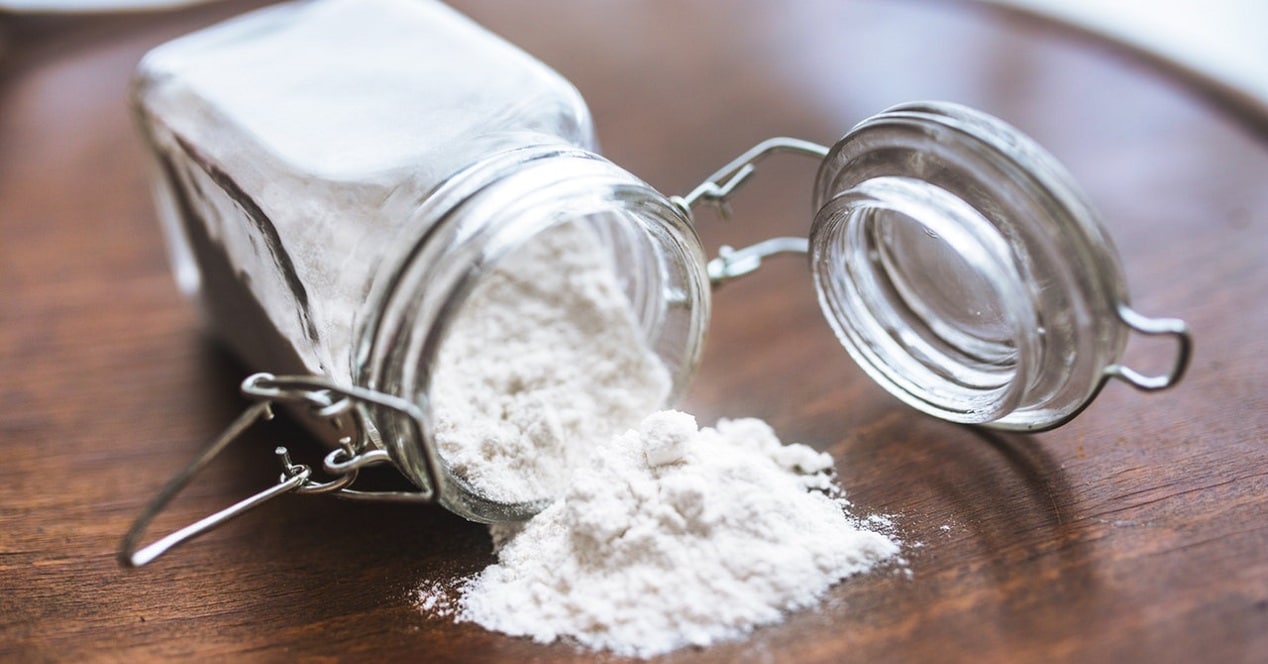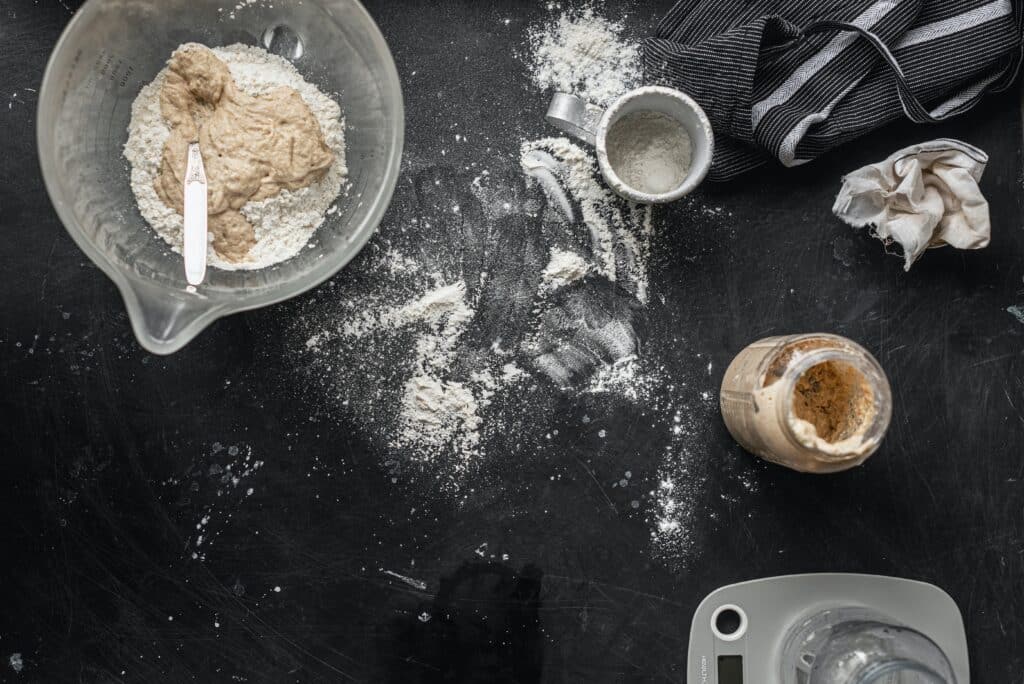
There are many of us who worry about complying with a varied and balanced diet. And it is that this brings great health benefits and improves the quality of life. However, despite taking care of ourselves and being aware of our diet, there are many foods that we do not know and that could provide us with greater benefits. Today we talk about rice flour. You've tried?
Rice is a widely consumed food around the world. It is a necessary cereal in our diet due to its great positive contributions, especially brown rice. Its flour is made from ground grains rich in nutrients that take care of us from the inside. This is consumed by many people with celiac disease since it does not contain gluten and is perfectly tolerated.
Nutritional value
In this type of flour we can find carbohydrates and a very low level of fat. It supposes a contribution of vegetable protein, fiber and minerals such as calcium, magnesium or iron. Among its vitamins, vitamin D and group B stand out. In addition, it is available in white and brown variants, so you may have also heard of sweet white rice, made from short-grain sticky rice. However, sweet flour is uncommon.
White rice flour has a fine texture, while brown rice is more granular due to its presence of bran. Furthermore, their nutritional values also differ slightly.
Nutritional composition of white flour:
- Calories: 366 kcal
- Protein: 5 grams
- Carbohydrates: 80 grams
- Fiber: 2 grams
- Vitamin E: 0mg
- Niacin: 2mg
- Folate: 4 mcg
- Calcium: 10 mg
- Iron: 0mg
- Magnesium: 35 mg
- Phosphorus: 98 mg
- Potassium: 76 mg
- Sodium: 0 g
- Zinc: 0mg
- Copper: 0mg
- Manganese: 1'2 mg
- Selenium: 15 mcg
Instead, brown flour has higher amounts of everything:
- Calories: 363 kcal
- Protein: 7 grams
- Carbohydrates: 76 grams
- Fiber: 4 grams
- Vitamin E: 1mg
- Niacin: 6mg
- Folate: 16 mcg
- Calcium: 11 mg
- Iron: 2 mg
- Magnesium: 112 mg
- Phosphorus: 337 mg
- Potassium: 76 mg
- Sodium: 8 g
- Zinc: 2mg
- Copper: 0mg
- Manganese: 4 mg
- Selenium: 0 mcg

Services
If you are thinking of substituting your traditional flour for rice flour in some of your recipes, you should know that it has some interesting benefits.
High fiber content
Our bodies need insoluble fiber to help get rid of waste, so if constipation is a problem, rice flour, especially brown rice. It is also important that you consume nuts, legumes and vegetables to enjoy a correct daily fiber intake.
Additionally, a high-fiber diet not only helps the body eliminate waste, but can also help lower cholesterol and keep blood sugar levels in check. So you will notice greater satiety during the day. It can even help minimize the risk of diverticular disease, colon disease, type 2 diabetes, and hypertension.
Its fiber is also perfectly suitable for diets aimed at weight loss. It absorbs less fat and achieves a lighter effect and a softened texture in recipes.
Suitable for celiacs
This type of flour is made from a gluten-free grain, which may make it the best choice when it comes to anyone with gluten intolerance and celiac disease. Gluten is a protein found in grain products, such as wheat and rye.
This disease causes a digestive condition that alters the immune system when it comes into contact with gluten. For those with an intolerance, although mild, it still aids in the digestive process if avoided. In this case, its use can be beneficial and a good alternative to wheat.
Take care of liver function
This flour contains hill, which helps transport cholesterol and triglycerides from the liver to where they are needed within the body. Therefore, choline can help support a healthy liver.
This substance is essential to maintain the essential components of membranes. Hepatocellular carcinoma is a cancer that originates from chronic liver disease, and rates are increasing. Since it has choline, it can be an excellent option to keep the liver in a healthy state. However, it is not the only remedy to enjoy good care for this organ.
Other benefits to consider also include:
- Rice flour, in the same way as the original cereal and especially in the integral option, can help you regulate blood cholesterol levels, thus protecting the health of your heart.
- The proteins, minerals and vitamins it contains make it a natural source of energy. Therefore, it helps people with high physical or intellectual performance.
- It is a source of antioxidants that neutralize free radicals and help prevent a wide variety of diseases. In addition, it favors the appearance of the skin and prevents the signs of aging.

How to introduce this flour into food?
We are talking about a type of flour that is used in the same way as the rest. We can use it to make biscuits, cookies or breads. It can be found in most supermarkets, so you won't have any difficulty finding it.
rice flour has less yeast, which may mean that, when baking, we will need more baking soda. White flour has a silky-smooth texture and a very white color, which sets it apart from others. It can be found in Asian markets and health food stores, but if you have a high-powered coffee grinder or mixer, you can also make your own.
It's generally a good alternative to white wheat flour, as they work the same way when used in cooking. Both are suitable for all uses, especially as thickening agents for soups, sauces, stews, etc.
Also, it is not a difficult type to find and can be purchased at most supermarkets and herbalists. You can buy it in individual packages or in bulk. Asian specialty stores often carry it as well.
You can even make it yourself at home. All you have to do is place the rice in a high-powered blender or food processor and grind it to a flour-like consistency. It is advisable to stop little by little, this way we avoid damaging the blades and we will obtain a fine flour. By doing it yourself you will be saving around 50 percent than if you bought it already manufactured.
Possible drawbacks
After knowing all the advantages of its incorporation into the diet, it is also convenient to know the possible health risks. These disadvantages are considered when compared with other types of flour, such as wheat.
Less folate content
Wheat flour and rice flour have comparable nutritional values with a slight difference. However, whole wheat flour contains a solid 44 mcg of folate, while even folate-rich brown rice provides a modest 16 mcg.
This vitamin is important for the formation of red blood cells and for the healthy growth and function of cells. It is essential during early pregnancy to reduce the risk of brain and spinal cord birth defects, which is why doctors often recommend supplementation.
Less phytonutrients
Both whole wheat and rice flour contain lignan, a plant-based phytonutrient. However, whole wheat flour has 30% more of this substance than rice flour. These are important because they show cancer-fighting abilities in addition to lowering cholesterol and cardiovascular health problems.
Phytonutrients also have high antioxidant power that protects DNA. They are able to suppress the mutations it suffers by neutralizing free radicals. However, this substance can be found in other foods to balance the intake and not suffer from nutritional deficiency.
Rice flour vs wheat flour
Milling changes the structure and flavor of the grain and also removes much of the nutrition. With the removal of the bran, most of the fiber is also removed. And by getting rid of the endosperm, many of the vitamins and minerals that whole grains provide are removed.
When comparing the nutritional value of rice and wheat, the refined version and the whole grain versions should be compared separately.
By weight, wheat and rice flour refined they are similar in calories, with around 100 per 30 grams. The fat in rice and wheat is also similar: less than half a gram per 30 grams. Rice and wheat are high in carbohydrates, 21 to 22 grams for the same amount. And a little less than a gram of that is fiber.
Their vitamin and mineral content also does not differ significantly. Refined wheat flour has slightly more potassium, iron, and folic acid. However, neither can be considered a good source of micronutrients, which is characteristic of refined grains.
The comparison of flours integrals reveals some more marked differences between wheat and rice. The calories are about the same, but whole wheat flour has more protein and fiber. In 30 grams of whole wheat flour we find 3,75 grams of protein compared to 2 grams of protein in brown rice flour. The same amount of wheat flour has 3 grams of fiber, while brown rice has 1.3 grams of fiber.
Whole wheat flour is richer in almost all vitamins and minerals. It has twice the iron, more than three times the amount of calcium, and more than twice the B vitamin folate. But in general, there are no significant differences. Both whole grain flours are good sources of additional nutrients in the diet and better options for health.